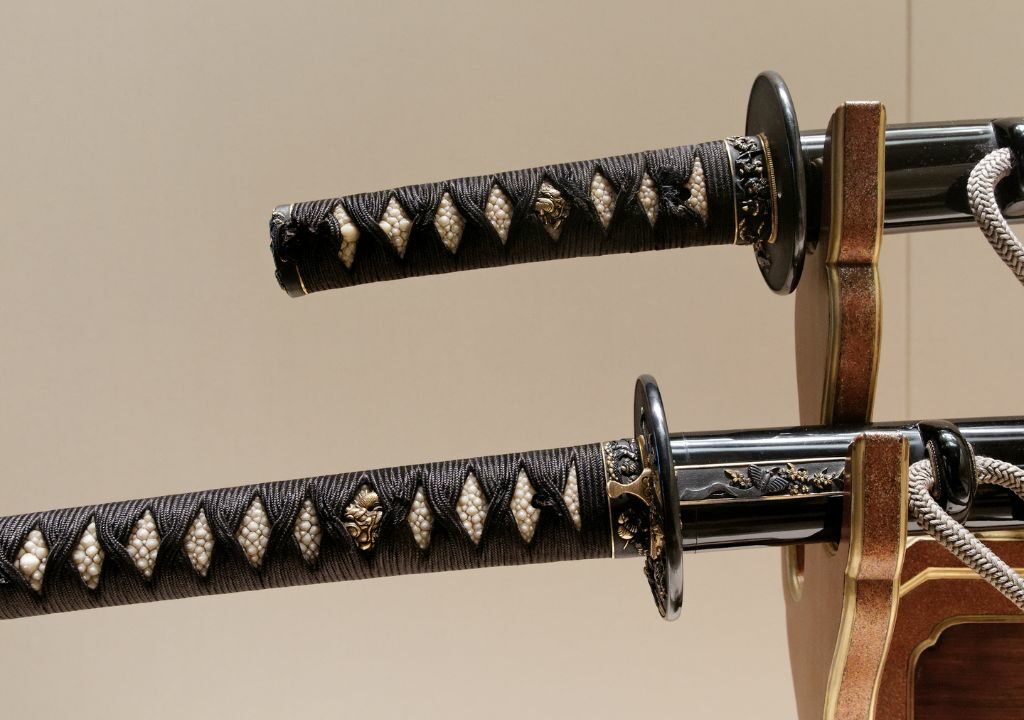The history of Japanese samurai swords, known as “katana,” is rich in tradition, craftsmanship, and cultural significance. These iconic weapons, renowned for their sharpness and artistry, have a storied past in Japan.
However, the influence of samurai swords extends far beyond Japan’s borders. This article explores the journey of Japanese samurai swords to the United States, tracing their path from symbols of Japanese culture to coveted collector’s items and martial arts tools.
The Arrival of Samurai Swords in the United States
The introduction of Japanese samurai swords in the United States can be traced back to the late 19th century, during increased trade and cultural exchange between Japan and the West. American collectors, soldiers, and travelers began to acquire these swords as souvenirs and trophies, intrigued by the mystique surrounding these legendary weapons.
One notable event that contributed to the popularity of samurai swords in the United States was the return of American servicemen from World War II. Many veterans brought back Japanese swords as war trophies, leading to a surge in interest and a growing number of privately owned katana in the country.
Appreciation and Preservation
The fascination with samurai swords in the United States goes beyond their role as weapons. These swords are revered for their artistry, craftsmanship, and historical significance. Collectors, enthusiasts, and martial artists in the United States have made significant efforts to appreciate, study, and preserve these iconic blades.
American collectors have played a crucial role in amassing impressive collections of Japanese swords. Museums across the country house remarkable displays of katana, offering the public an opportunity to admire the intricate designs and historical importance of these weapons.
One such collection is the Met’s Arms and Armor Department in New York City, which houses a world-renowned assortment of Japanese swords. The museum’s collection showcases craftsmanship and provides insight into the samurai way of life, where the sword was not merely a tool of war but a symbol of honor and pride.
Martial Arts and Samurai Swords
Samurai swords have found a second home within the martial arts community in the United States. Practices such as Kendo, Iaido, and Kenjutsu, which focus on swordsmanship, have grown in popularity. American practitioners have embraced these disciplines, learning the physical techniques and the philosophy and etiquette associated with using samurai swords.
Kendo, for example, is a modern Japanese martial art that uses bamboo swords (shinai) to simulate the use of a katana. It has gained a dedicated following in the United States, with numerous dojos (training halls) spread nationwide. The rigorous training and adherence to the principles of Bushido, the way of the warrior, have attracted many American students.
The Influence of Pop Culture
The allure of samurai swords extends into popular culture, where they have made significant appearances in movies, books, and video games. Films like Akira Kurosawa’s “Seven Samurai” and Quentin Tarantino’s “Kill Bill” have prominently featured katana, further contributing to these blades’ fascination.
Additionally, the samurai sword has become a symbol of honor and duty in numerous works of fiction. Characters like Hattori Hanzo, a legendary swordsmith in “Kill Bill,” have become iconic, and their stories have contributed to the sword’s status as a symbol of the samurai code of conduct in modern storytelling.
Challenges in the Preservation of Samurai Swords
Despite the appreciation and respect for Japanese samurai swords in the United States, the trade in these historic weapons has faced challenges. The export of authentic katana from Japan is highly regulated, making it difficult for collectors to acquire new pieces. This has led to a market for antique swords, which can be quite costly.
However, this demand for antique swords has also raised concerns about the potential illegal trade in stolen or counterfeit pieces. To address this issue, various organizations and experts in the United States work to verify the authenticity of samurai swords, ensuring they are acquired through legal and ethical means.
Conclusion
Japanese samurai swords have profoundly impacted the United States, evolving from war trophies to symbols of art, honor, and martial discipline. The enduring fascination with katana in American culture can be attributed to their intrinsic beauty and the rich history of the samurai.
From museums and private collections to martial arts dojos and the realm of pop culture, these iconic swords continue to captivate the American imagination.
While challenges exist in acquiring and preserving authentic katana, the legacy of Japanese samurai swords in the United States remains vibrant and enduring, a testament to the enduring appeal of these remarkable weapons.
